 W
WThe Singing Revolution is a commonly used name for events that led to the restoration of independence of the Baltic states of Estonia, Latvia, and Lithuania from the Soviet Union at the end of the Cold War. The term was coined by an Estonian activist and artist, Heinz Valk, in an article published a week after 10–11 June 1988, spontaneous mass evening singing demonstrations at the Tallinn Song Festival Grounds. Later, all three countries joined EU and NATO in 2004.
 W
WAn independence referendum was held in the Latvian SSR on 3 March 1991, alongside a similar referendum in the Estonian SSR the same day. Known as the "Popular Survey about the independence of the Republic of Latvia", voters were asked "are you in favour of a democratic and independent Republic of Latvia". It was approved by 74.9% of voters, with a turnout of 87.6%. Latvian Republic civilians registered in Soviet Army units also had the right to vote in this poll.
 W
WAn independence referendum was held in the Lithuanian Soviet Socialist Republic on 9 February 1991, eleven months after independence from the Soviet Union had been declared on 11 March 1990. Just over 93% of those voting voted in favour of independence, while the number of eligible voters voting "yes" was 76.5%, far exceeding the threshold of 50%. Independence was subsequently achieved in August 1991. The independence of the Republic of Lithuania was re-recognized by the United States on 2 September 1991 and by the Soviet Union on 6 September 1991.
 W
WThe Act of the Re-Establishment of the State of Lithuania or Act of March 11 was an independence declaration by Lithuania adopted on March 11, 1990, signed by all members of the Supreme Council of the Republic of Lithuania led by Sąjūdis. The act emphasized restoration and legal continuity of the interwar-period Lithuania, which was occupied by the Soviet Union and lost independence in June 1940. It was the first Soviet republic to declare independence from the Soviet Union that would cause the dissolution of the Soviet Union in 1991.
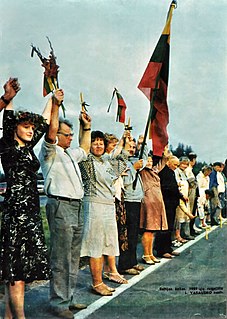 W
WThe Baltic Way or Baltic Chain was a peaceful political demonstration that occurred on 23 August 1989. Approximately two million people joined their hands to form a human chain spanning 675.5 kilometres (419.7 mi) across the three Baltic states – Estonia, Latvia, and Lithuania, which were considered at the time to be constituent republics of the Soviet Union.
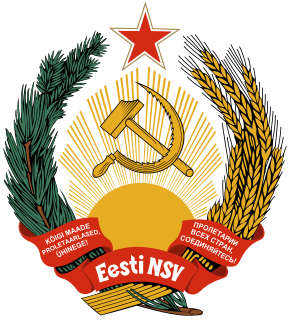 W
WThe Communist Party of Estonia was a political party in Estonia.
 W
WThe Communist Party of Latvia was a political party in Latvia.
 W
WThe Communist Party of Lithuania is a communist party in Lithuania. The party was established in early October 1918 and operated clandestinely until it was legalized by Soviet authorities in 1940. The party was banned in August 1991, following the collapse of the Soviet Union and the dissolution of the Lithuanian SSR.
 W
WDemocratic Labour Party of Lithuania was the renamed Communist Party of Lithuania. It was a political party in Lithuania in the 1990s, which claimed to be social-democratic. The youth organization of LDDP was called Lithuanian Labourist Youth Union.
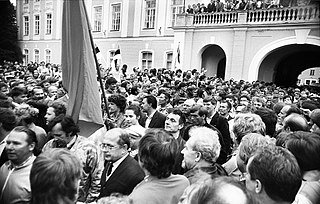 W
WThe Intermovement (International Movement of Workers in the Estonian Soviet Socialist Republic) was a political movement and organisation in the Estonian SSR. It was founded on 19 July 1988 and claimed by different sources 16,000 - 100,000 members. The original name of the movement was Interfront, which was changed to Intermovement in autumn 1988.
 W
WThe January Events took place in Lithuania between 11 and 13 January 1991 in the aftermath of the Act of the Re-Establishment of the State of Lithuania. As a result of Soviet military actions, 14 civilians were killed and 702 were injured. The events were centered in its capital, Vilnius, along with related actions in its suburbs and in the cities of Alytus, Šiauliai, Varėna, and Kaunas.
 W
WThe Latvian National Independence Movement was a political organization in Latvia from 1988 until 1997.
 W
WThe Latvian Social Democratic Party was a political party in Latvia formed by a reformist wing of the Communist Party of Latvia.
 W
WThe Declaration "On the Restoration of Independence of the Republic of Latvia" was adopted on 4 May 1990, by the Supreme Soviet of the Latvian SSR. The Declaration stated that, although Latvia had de facto lost its independence in 1940, when it was annexed by the Soviet Union, the country had de jure remained a sovereign country as the annexation had been unconstitutional and against the will of the Latvian people. Therefore, it resolved that the Molotov–Ribbentrop Pact and the Soviet occupation of Latvia in 1940 were illegal. It also asserted that the heavily rigged 1940 elections were illegal and unconstitutional, and that all acts of the "People's Saeima" chosen at that election–including the request to join the Soviet Union on 21 July 1940–were ipso facto void.
 W
WThe Popular Front of Estonia, introduced to the public by the Estonian politician Edgar Savisaar under the short-lived name Popular Front for the Support of Perestroika, was a political organisation in Estonia in the late 1980s and early 1990s. Edgar Savisaar introduced the idea of popular front during a TV show on 13 April 1988. The idea was developed through the year and finally The Estonian Popular Front was established on 1 October 1988 with a massively crowded congress which turned to a culmination of the first phase of the Singing Revolution.
 W
WThe Popular Front of Latvia was a political organisation in Latvia in the late 1980s and early 1990s which led Latvia to its independence from the Soviet Union. It was similar to the Popular Front of Estonia and the Sąjūdis movement in Lithuania.
 W
WRoko maršas was a rock music festival, organized in various cities of Lithuania. It was held in 1987–1989. It was resurrected in 1996 and 1997. The first festivals were organized while Lithuania was still part of the Soviet Union. They became part of the Singing Revolution, spreading ideas of the Lithuanian independence movement among the youth. It helped to awaken the younger generation from Soviet-era apathy and inspire them. In total, the three first festivals attracted an estimated 130,000 spectators. The festivals became a rehearsal for the mass protest rallies by the Sąjūdis that lead to the declaration of Lithuania's independence in March 1990.
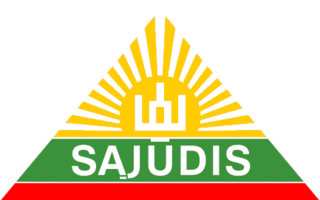 W
WSąjūdis, initially known as the Reform Movement of Lithuania, is the political organisation which led the struggle for Lithuanian independence in the late 1980s and early 1990s. It was established on 3 June 1988, and was led by Vytautas Landsbergis. Its goal was to seek the return of independent status for Lithuania.
 W
WThe Singing Revolution is a 2006 documentary film created by Americans James Tusty and Maureen Castle Tusty about the nonviolent Singing Revolution in Estonia in which hundreds of thousands of Estonians gathered publicly between 1986 and 1991, in an effort to end decades of Soviet occupation. The revolutionary songs they created anchored Estonia’s non-violent struggle for freedom.
 W
WThe Soviet economic blockade of Lithuania was the economic blockade imposed by the Soviet Union on Lithuania between 18 April and 29 June 1990. It began soon after Lithuania declared restoration of its independence on 11 March 1990. The Soviets hoped that the economic difficulties would force the Lithuanian leadership to revoke or suspend the independence restoration. Even though Lithuania entered into negotiations to end the blockade, the Soviet Union did not regain control of the country, later resorting to military means in an attempt to stop the independence process.
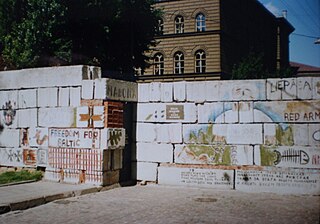 W
WThe Barricades were a series of confrontations between the Republic of Latvia and the Union of Soviet Socialist Republics in January 1991 which took place mainly in Riga. The events are named for the popular effort of building and protecting barricades from 13 January until about 27 January. Latvia, which had declared restoration of independence from the Soviet Union a year earlier, anticipated that the Soviet Union might attempt to regain control over the country by force.